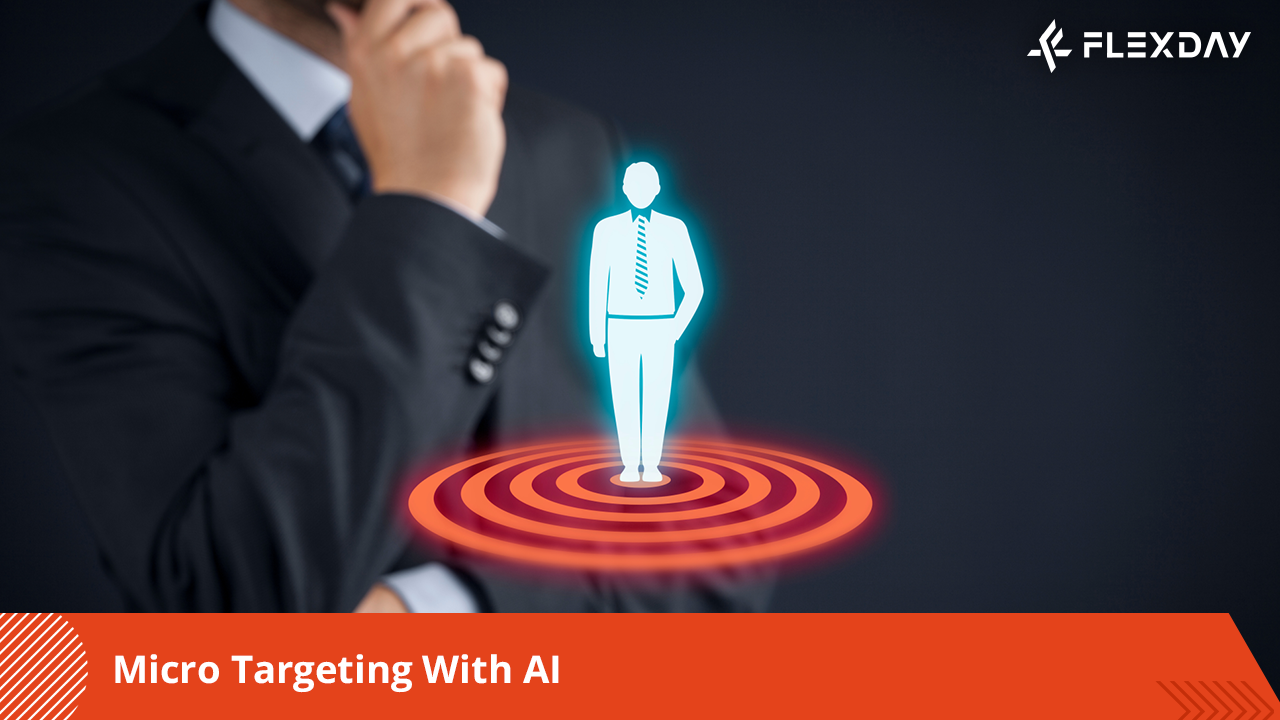
January 19th, 2023
Micro Targeting With AI
Micro-targeting ads — or making sure that the right ad gets to the right consumer — has grown more precise as increasing numbers of ad–tech software packages have added AI to their toolkits.
New research on Facebook’s AI-powered micro-targeting advertising service, for example, has revealed that an advertiser has a very good chance of targeting an ad to a specific person on Facebook — as long as that advertiser has data on 18 of that person’s random interests.
Specifically, the researchers found they were able to target a particular person in the Facebook universe eight out of nine times as long as they had that deep knowledge of at least 18 of each person’s random interests.

That’s fairly amazing, given that Facebook currently serves 2.8 billion people.
Being able to target an ad to a particular person amidst a group of 2.8 billion people is powerful, to say the least.
Impressed by that kind of specificity, increasing numbers of enterprises have decided to bring AI-powered micro-targeting advertising in-house to use with their own customer databases and on their own digital properties.
One of the key applications where the tech has excelled in-house is on company Web sites.
For example: By knowing a Web site visitor’s IP address, age, gender, zip code, education level, income, buying habits, browsing habits, previous purchases with the company, abandoned purchase intentions and similar, enterprises can serve up a highly specific ad to that visitor they believe will most likely trigger a sale.

Moreover, by studying the behavior and response to these ads over time, the company’s AI is able to predict with high probability:
*What kinds of products that individual is interested in buying on the company’s site
*At what time of the day, week, month and year that individual is most
likely to make certain kinds of purchases
*How much that visitor is willing to pay for products — as compared to
another visitor
*What kinds of ads the visitor is likely to click on while visiting the Web site
Meanwhile, enterprises are also using AI-powered ad targeting to precisely refine the kinds of ads they show to a particular individual, based on how successfully those ads performed with similar individuals.
Businesses focusing on this kind of ad targeting begin by designing an ad that micro-targets a subset of its customer base.
That subset may, for example, be customers who are single, under 30, college graduates, make over $50,000-a-year and have made a purchase on the company Web site within the last 30 days.
Next, the AI serves up a micro-targeted ad specially designed for this subset of people within the company’s customer base — and then monitors how well the ad performs.
For each person in the subset, the AI takes note of who clicked on the thread, who made a purchase after exposure to the ad, who passed on the offer and similar.
Armed with those insights, the AI is then able to root through the data to uncover even more patterns about the subset of customers it’s targeting.
The AI discovers, for example, that the micro-targeted ad worked well for a subset of customers who live in cities of more than a million people.
But it also finds the same ad fell flat with customers who live in cities of 50,000 or less.
The result: The AI keeps using the ad to target new customers in the subset of company customers who live in cities of a million or more.
But the tech recommends that the company’s ad department come up with a slightly different ad to better appeal to customers who live in smaller cities.
Or: The AI may simply run an alternate ad that the ad department has already designed that targets customers who live in smaller cities.
Or: The system may go on to experiment with 10 different versions of the same ad designed by the ad department before uncovering a design that works best for customers who live in smaller cities.
One of the beauties of all this AI automation and micro-targeting? More often than not, the AI will most likely identify groups of customers who respond to specific ads — and share more than one identity variable.
A second group of customers who respond most favorably to a specific ad served up by the AI, for example, may all happen to own dogs, take three vacations a year and vote Democratic.
And a third group of customers who respond most favorably to a slightly different ad may all happen to own parakeets, prefer pistachio ice cream and vote Republican.
For a human being, attempting to identify all these subsets of subsets, track and monitor all the changing variables and relentlessly serve-up ad version after ad version to the ever-changing nature of the company’s customer groups and sub-groups would be — at the very least — a harrowing task.

But for AI, it’s a cakewalk.
With AI ad micro-targeting, the only real challenge to getting started with the technology is to sort through all of the various AI ad-serving technologies that are available to you — and come up with the solution that’s a perfect fit for your business.
And that’s where relying on the guidance of a seasoned AI consultant pays off many times over.
With a trusted AI consultant, you can bypass all the research, bypass all the testing, bypass all the second-guessing and bring in an off-the-shelf or custom AI solution specializing in micro-targeting ads that will deliver the best value to you.

